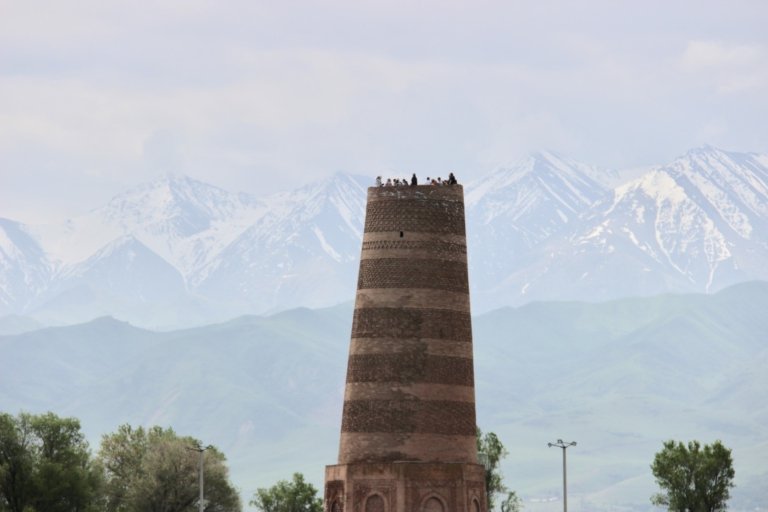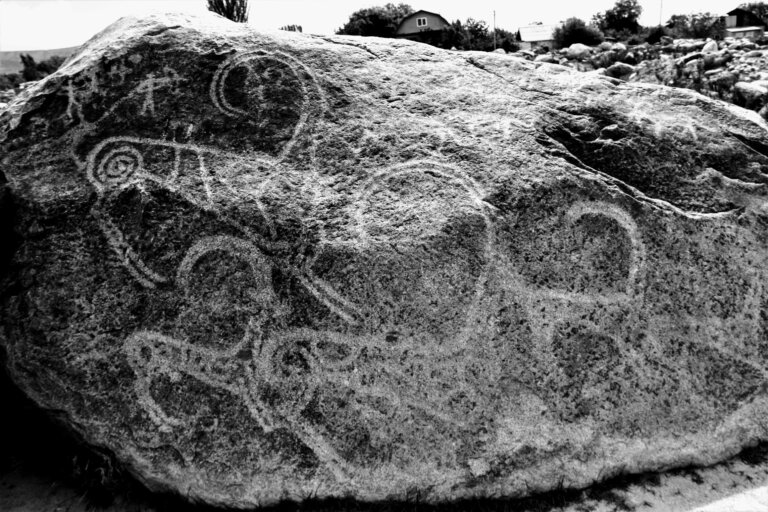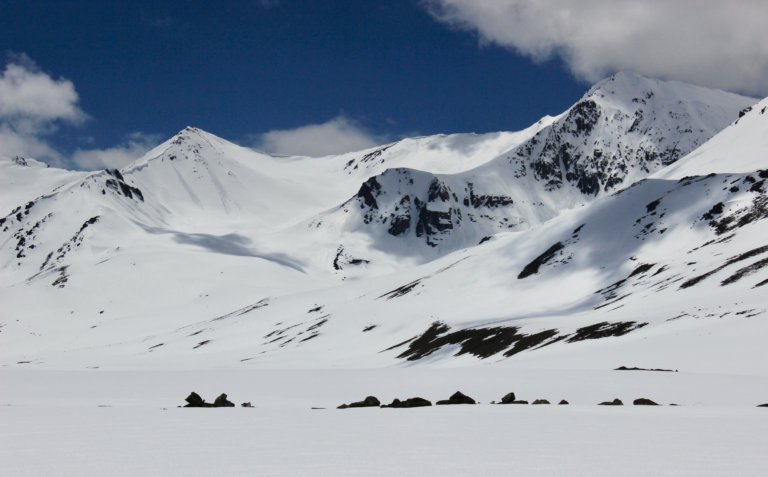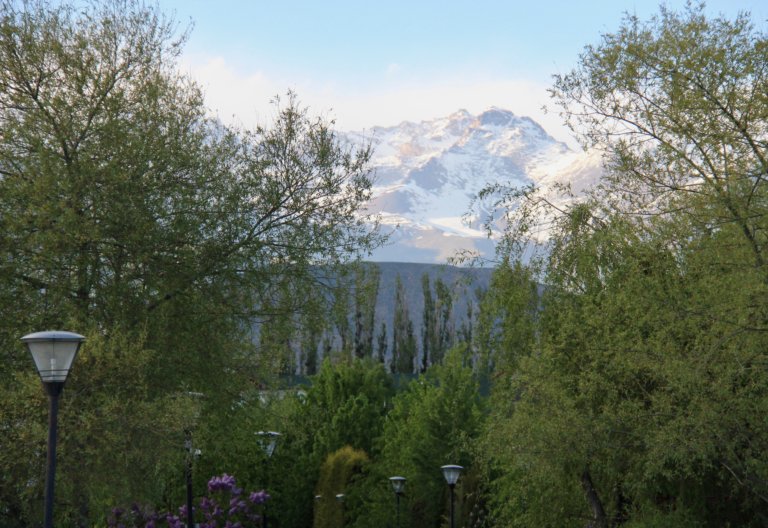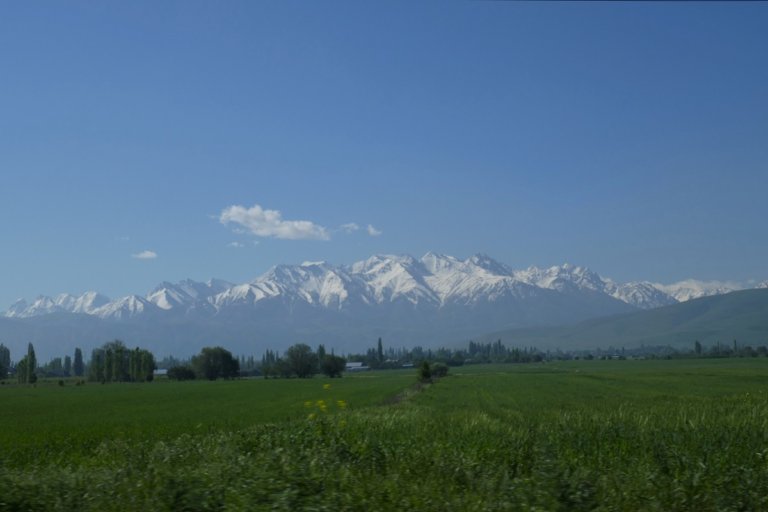Kyrgyzstan. Toktogul to Osh. Day 22 May 21st 2019
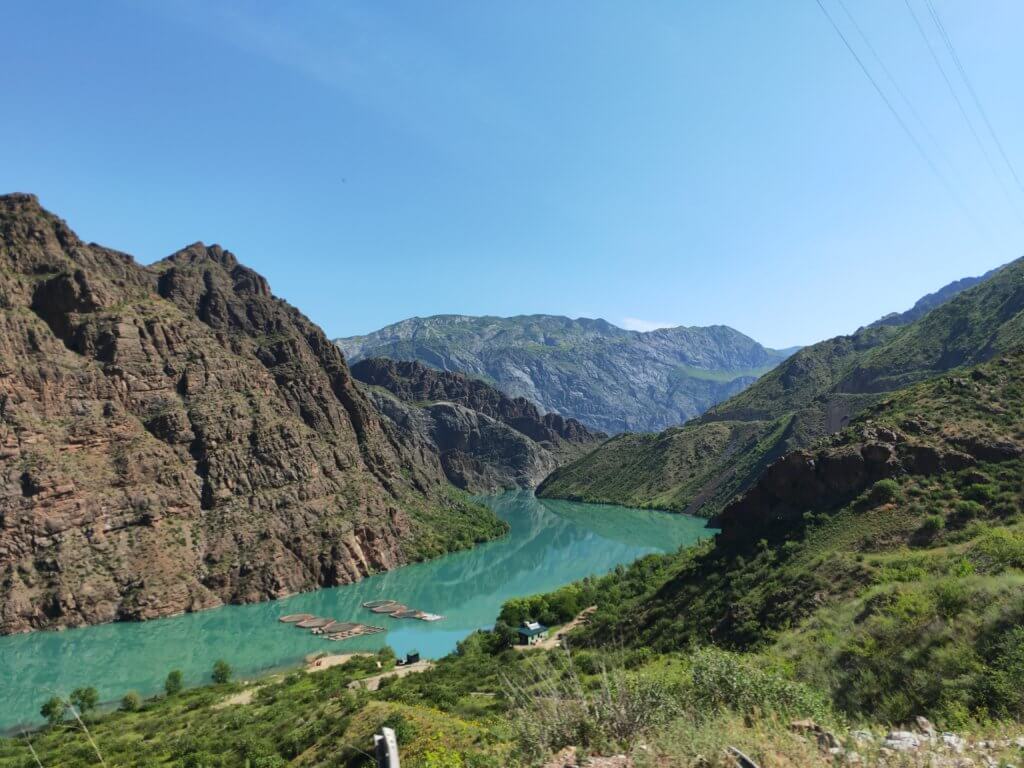
Off to ancient Osh today after a peaceful start with a sunny day and breakfast overlooking the reservoir. Back on the “main” road Bishkek to Osh, which varies from newly bituminised smooth roads with marked lanes to crumbly washouts, and road construction. The road winds alongside the emerald water lined by steep red rock columns.
We head to Uzgen where records are said to mention the city as early as 2nd century BC. Here we see the 11th Century minaret and mausoleum. Like the Burana tower it was established by the Turkish Karakhanid dynasty after the Turks had pushed back a large Chinese Army.

After walking around the site we climbed the tower, soon followed up by a group of young girls who surrounded Mel with lots of questions. There was a young man nearby who was able to translate and it was a magic moment when they asked: “What is your name?” Collectively they all leaned forward as one to hear the answer and then repeated it with squeals of delight.

Arriving in the ancient city of Osh it is easy to see the five rocky outcrops called Suleiman Too (Solomon Mountain) that dominate the city. Osh is the second-largest city in Kyrgyzstan and was a major stopping point on the Silk Road. You enter the city under a large arch announcing that you are indeed on the Silk Road.
We were driven to the foot of the outcrops where we met our guide Jumagul. She was in her last year of Economics at the American International University in Bishkek. Enthusiastic and passionate about the history of Osh.
So started the long slow climb in 32c heat to the top of the crags. Osh is reputed to be over three thousand years old, Suleiman Too a UNESCO site and the outcrops are the stuff of legend which Jumagul regaled us with as we walked.

The caves of the rocks had provided shelter and a position of power to the priests who inhabited its heights. Zoroastrians are said to have been early inhabitants and many legends abound. It is said Suleiman (Solomon) arrived here on a winged horse looking for water. Members of Alexander the Great’s army were said to have been killed by magic sent against them by the priestly residents.
As we walked to the small mosque we passed pilgrimage points along the way with cures for infertility, bad backs, and a method of determining if you are a good or bad person. The latter is by dropping a coin into a hole in the rocks-if it comes out the bottom-you are bad. We were all bad!

Babur is a central historical figure, on a clifftop stands his mosque. Babur is said to be the founder of the Mughal Empire (in India) and a descendant of Tamerlane. A Kyrgyz hero, the mosque bearing his name is a simple structure with a commanding view over the city.

Like all the cities we have seen so far in Central Asia the number of parks are a pleasant surprise.
On returning to the city we had a walk through the Bazaar abuzz with local shoppers and everything one needed from vegetables to musical instruments.
Our final stop on our whirlwind visit was a walk through the Memorial Park ending up at Lenin’s statue. I asked why Kyrgyzstan still insisted on having Soviet-era statues unlike other ex-Soviet countries -her answer was in two parts “It is very expensive to pull such statues down. Secondly, we have had and should continue to have a very close economic relationship with Russia”. I thought this a sensible viewpoint for a very small country surrounded by much larger ones with whom they have had a difficult history.

The Memorial park held the large memorial monument to World War II with a tall bronze statue of the representation of Mother’s grief. A particularly poignant moment was on standing beside the Eternal Flame being told the flame had been extinguished as the country was too poor to keep it burning.

All in all another interesting day with a wonderful guide-now tomorrow on to ‘Stan’ Three.
